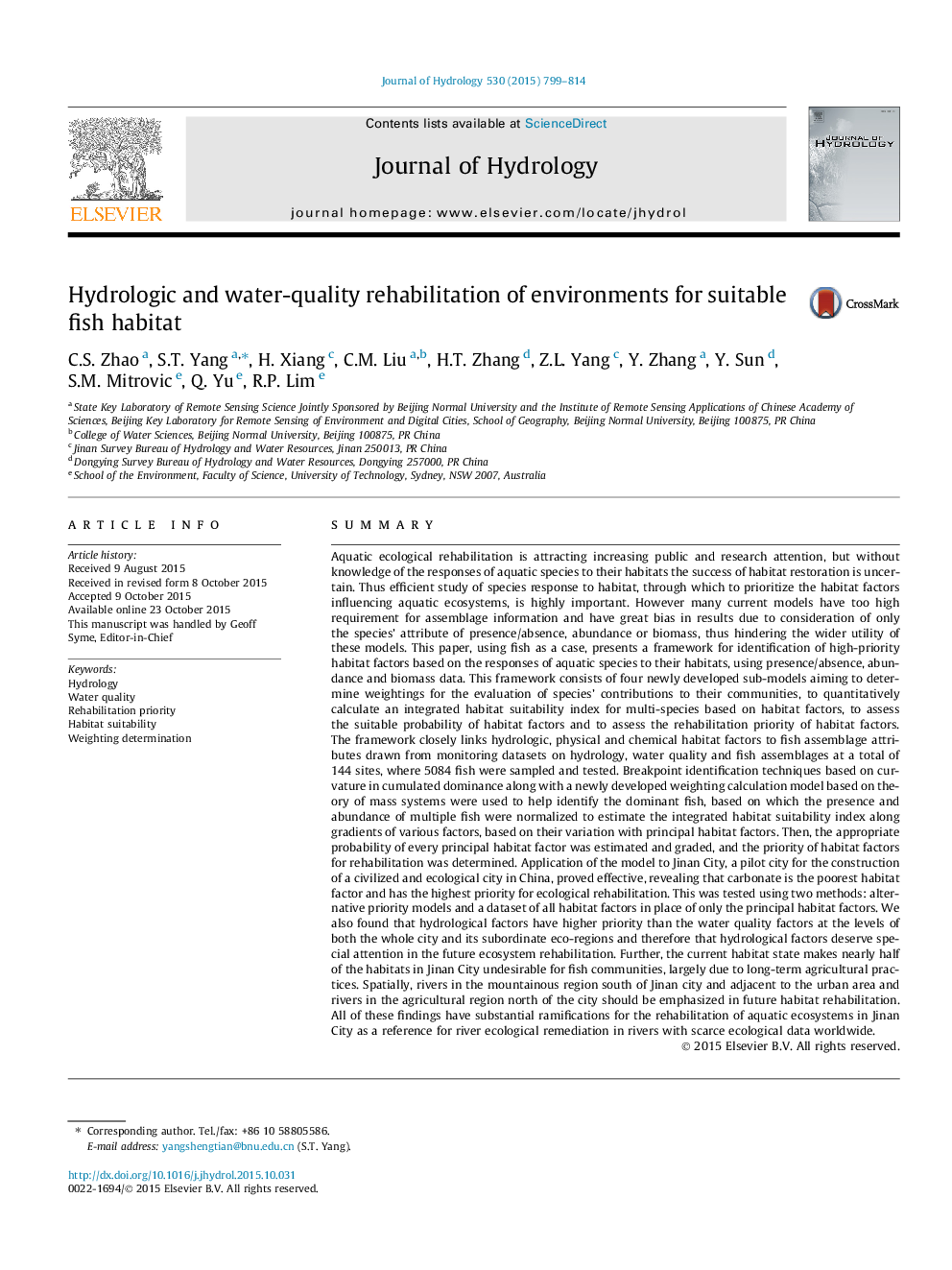| کد مقاله | کد نشریه | سال انتشار | مقاله انگلیسی | نسخه تمام متن |
|---|---|---|---|---|
| 6410285 | 1629921 | 2015 | 16 صفحه PDF | دانلود رایگان |
- We present a rehabilitation priority framework based on response of fish to their habitat.
- It includes a new weighting calculation method based on center-of-mass systems.
- It assesses the suitable probability of habitat factors with multi-species responses.
- Lower requirement for assemblage information and expertise makes it practical.
- Results were tested with an alternative model and a different habitat dataset.
SummaryAquatic ecological rehabilitation is attracting increasing public and research attention, but without knowledge of the responses of aquatic species to their habitats the success of habitat restoration is uncertain. Thus efficient study of species response to habitat, through which to prioritize the habitat factors influencing aquatic ecosystems, is highly important. However many current models have too high requirement for assemblage information and have great bias in results due to consideration of only the species' attribute of presence/absence, abundance or biomass, thus hindering the wider utility of these models. This paper, using fish as a case, presents a framework for identification of high-priority habitat factors based on the responses of aquatic species to their habitats, using presence/absence, abundance and biomass data. This framework consists of four newly developed sub-models aiming to determine weightings for the evaluation of species' contributions to their communities, to quantitatively calculate an integrated habitat suitability index for multi-species based on habitat factors, to assess the suitable probability of habitat factors and to assess the rehabilitation priority of habitat factors. The framework closely links hydrologic, physical and chemical habitat factors to fish assemblage attributes drawn from monitoring datasets on hydrology, water quality and fish assemblages at a total of 144 sites, where 5084 fish were sampled and tested. Breakpoint identification techniques based on curvature in cumulated dominance along with a newly developed weighting calculation model based on theory of mass systems were used to help identify the dominant fish, based on which the presence and abundance of multiple fish were normalized to estimate the integrated habitat suitability index along gradients of various factors, based on their variation with principal habitat factors. Then, the appropriate probability of every principal habitat factor was estimated and graded, and the priority of habitat factors for rehabilitation was determined. Application of the model to Jinan City, a pilot city for the construction of a civilized and ecological city in China, proved effective, revealing that carbonate is the poorest habitat factor and has the highest priority for ecological rehabilitation. This was tested using two methods: alternative priority models and a dataset of all habitat factors in place of only the principal habitat factors. We also found that hydrological factors have higher priority than the water quality factors at the levels of both the whole city and its subordinate eco-regions and therefore that hydrological factors deserve special attention in the future ecosystem rehabilitation. Further, the current habitat state makes nearly half of the habitats in Jinan City undesirable for fish communities, largely due to long-term agricultural practices. Spatially, rivers in the mountainous region south of Jinan city and adjacent to the urban area and rivers in the agricultural region north of the city should be emphasized in future habitat rehabilitation. All of these findings have substantial ramifications for the rehabilitation of aquatic ecosystems in Jinan City as a reference for river ecological remediation in rivers with scarce ecological data worldwide.
Journal: Journal of Hydrology - Volume 530, November 2015, Pages 799-814
